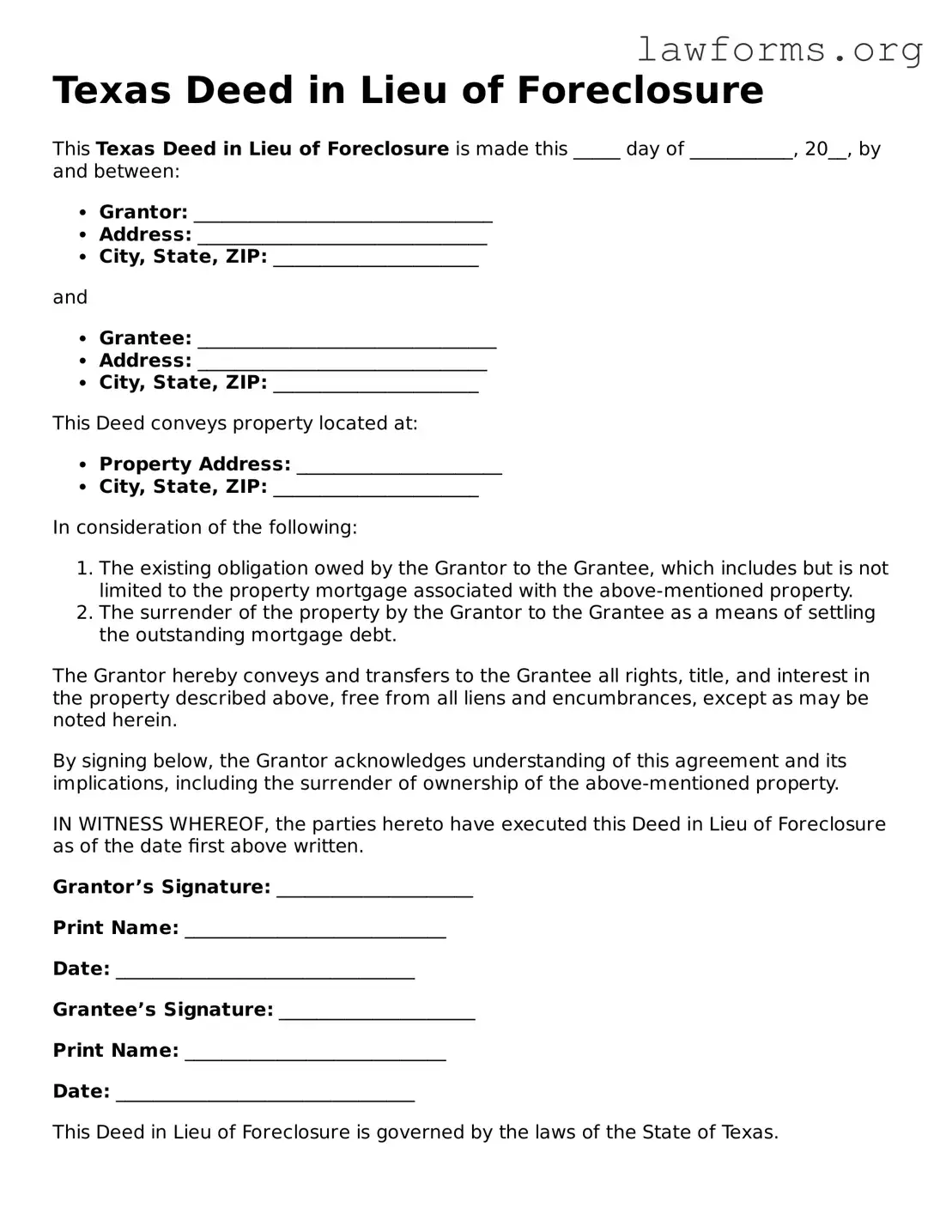Texas Deed in Lieu of Foreclosure
This Texas Deed in Lieu of Foreclosure is made this _____ day of ___________, 20__, by and between:
- Grantor: ________________________________
- Address: _______________________________
- City, State, ZIP: ______________________
and
- Grantee: ________________________________
- Address: _______________________________
- City, State, ZIP: ______________________
This Deed conveys property located at:
- Property Address: ______________________
- City, State, ZIP: ______________________
In consideration of the following:
- The existing obligation owed by the Grantor to the Grantee, which includes but is not limited to the property mortgage associated with the above-mentioned property.
- The surrender of the property by the Grantor to the Grantee as a means of settling the outstanding mortgage debt.
The Grantor hereby conveys and transfers to the Grantee all rights, title, and interest in the property described above, free from all liens and encumbrances, except as may be noted herein.
By signing below, the Grantor acknowledges understanding of this agreement and its implications, including the surrender of ownership of the above-mentioned property.
IN WITNESS WHEREOF, the parties hereto have executed this Deed in Lieu of Foreclosure as of the date first above written.
Grantor’s Signature: _____________________
Print Name: ____________________________
Date: ________________________________
Grantee’s Signature: _____________________
Print Name: ____________________________
Date: ________________________________
This Deed in Lieu of Foreclosure is governed by the laws of the State of Texas.
